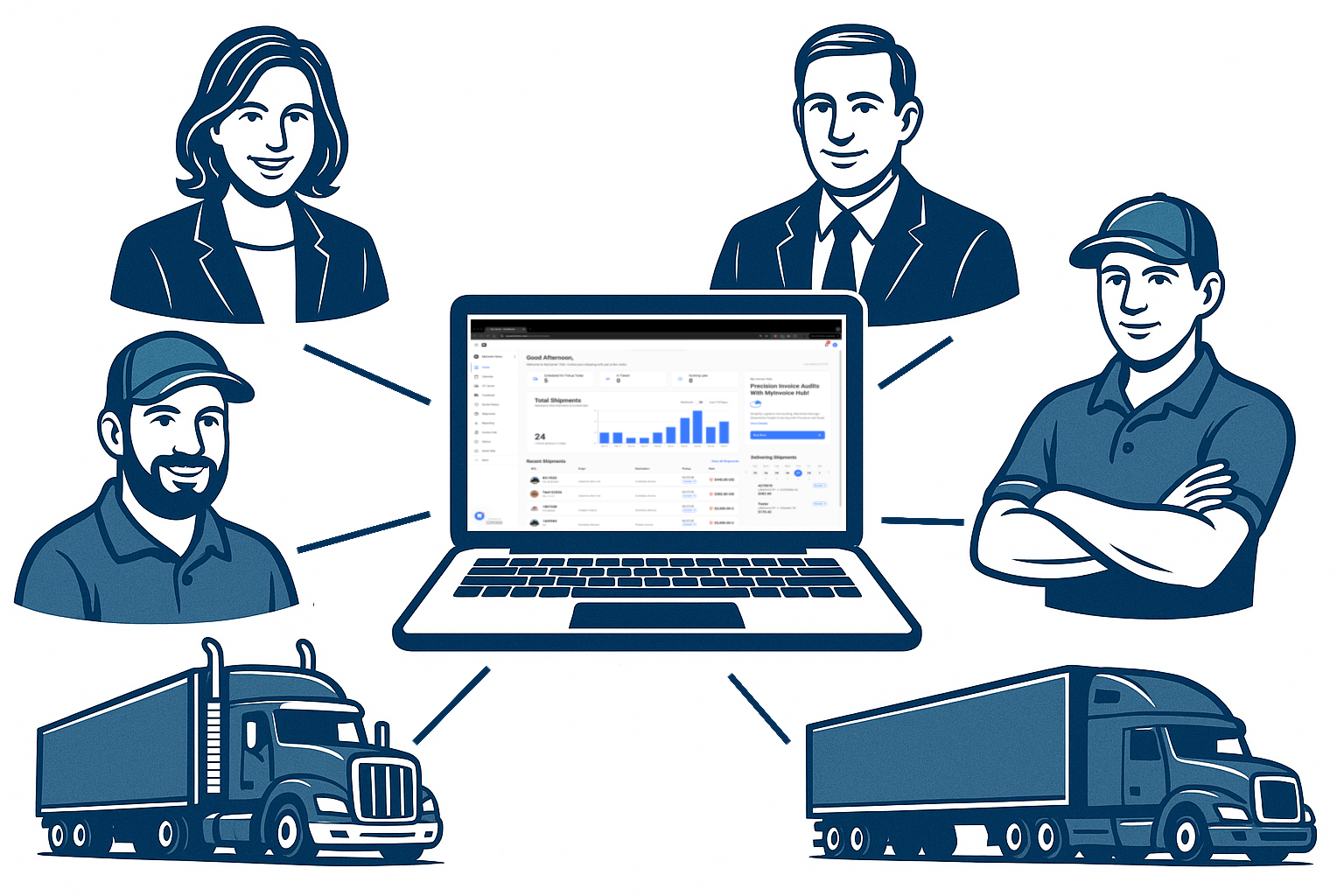For years, LTL (Less-than-Truckload) shipping has been defined by its complexity. Fragmented workflows, manual processes, and communication gaps between teams and carriers have made it difficult to ship efficiently - let alone strategically.
But a shift is underway.
Companies are now embracing connected transportation management technology that acts as a digital bridge—linking carriers, internal teams, and critical data in one cohesive environment. The result? Faster shipping, fewer errors, and greater control across the entire freight lifecycle.
The Future of LTL is Connected, Automated, and Data-Driven
Many organizations still manage LTL shipping with a patchwork of tools - quoting in one place, dispatching in another, and tracking manually (often via email or phone). Alternatively, they rely on a third party to manage shipments - leading to markups and limited visibility. This disjointed approach causes delays, drives up costs, and puts strain on every department involved.
Shipping touches multiple parts of the business—from logistics and warehouse operations to customer service, sales, and finance. When these stakeholders work in silos, key information gets lost, response times lag, and issues become harder to resolve.
The Solution: A Digital Bridge Across the Shipping Lifecycle
Modern transportation management technology unifies LTL workflows from quote to invoice, serving as a digital bridge that connects:
- Direct carrier connections for real-time rates, live tracking, and fast, accurate invoicing.
- Seamless automation that reduces manual work and improves accuracy
- Data analytics to uncover cost-saving opportunities and performance trends
- Finance systems to streamline freight audits and resolve billing discrepancies
- ERP, OMS, and WMS platforms to eliminate duplication and ensure continuity
With this kind of integration, companies are no longer just reacting to shipping needs—they’re proactively managing their supply chain.
Key Capabilities That Power a Connected Shipping Strategy
Here are six foundational components of a streamlined LTL shipping solution:
- Real-Time Quotes
View and compare rates across all carriers instantly, enabling faster, informed booking decisions.
- Automated Dispatching
Send accurate shipment details directly to carriers - auto-generating generating BOLs, PRO numbers, and labels in one step.
- Live Tracking and Notifications
Eliminate the “Where’s my shipment?” loop with real-time visibility and automatic customer updates.
- Advanced Analytics and Reporting
Spot trends, improve lane performance, and better manage freight spend with centralized data.
- Freight Audit and Billing Visibility
Access all freight invoices in one place, identify discrepancies quickly, and accelerate resolutions.
- System Integrations
Connect seamlessly to order or warehouse management systems, minimizing errors and reducing manual input.
Why It Matters: From Operations to Executive Strategy
When shipping workflows are connected through a digital bridge, the impact is felt across the organization:
- Operations run more efficiently with fewer touchpoints and less manual effort.
- Customer service has the information needed to deliver faster, more accurate responses.
- Finance gains transparency into freight spend and can audit with precision.
- Leadership gets the insights needed to optimize strategy and reduce transportation costs.
Taking the Next Step
As supply chains grow more complex, the need for transparency, automation, and cross-team collaboration becomes critical. Building a digital bridge isn’t just about technology—it’s about enabling every department to work smarter, faster, and more cohesively.
Platforms like MyCarrier provide a connected solution, bringing all aspects of LTL shipping together into a single, connected workflow. By eliminating manual roadblocks and uniting people, processes, and data, businesses can streamline shipping and unlock meaningful savings and efficiency.


